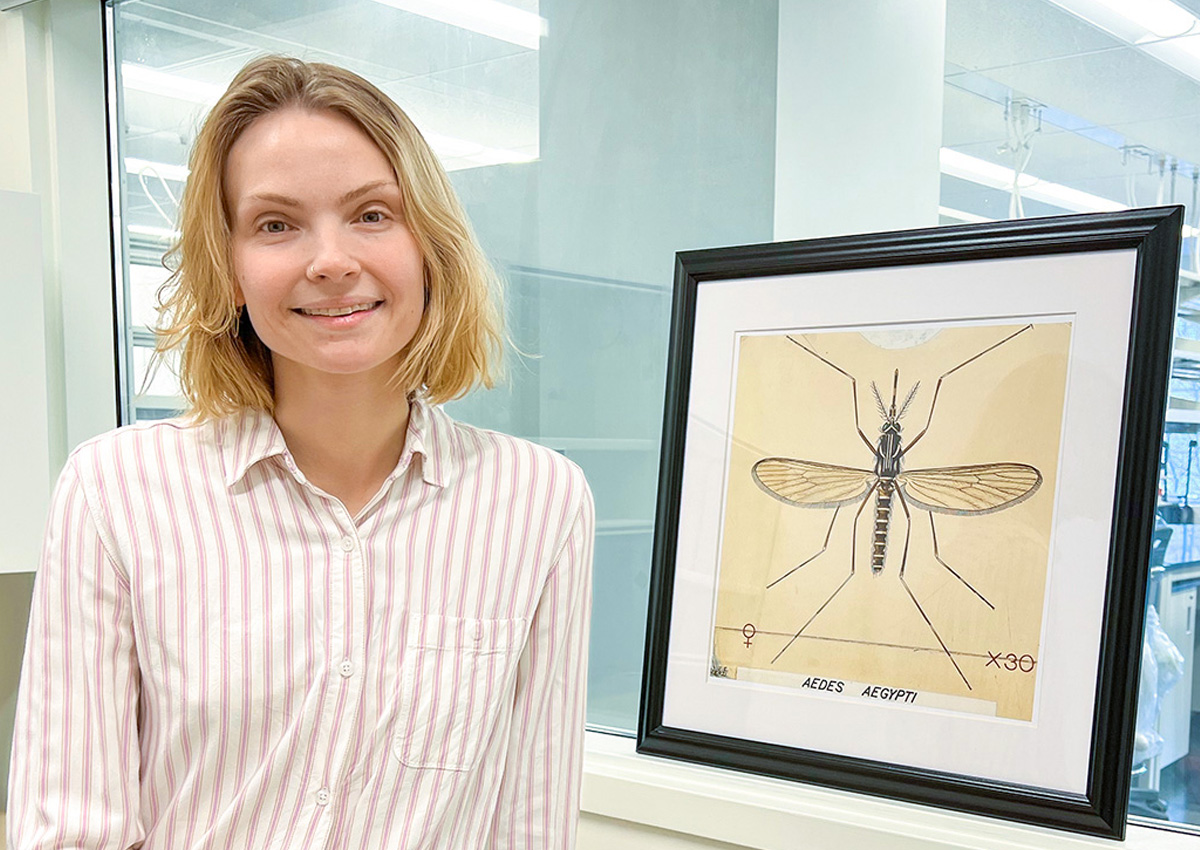
CRISPR-based Tool to Help Tackle Deadly Mosquito-borne Diseases
February 15, 2023| |
A 2017 report from the World Health Organization reports that mosquito-transmitted diseases such as malaria, dengue, and Chikungunya affect an estimated 347.8 million people each year and are responsible for nearly 450,000 deaths, making mosquitoes one of the most dangerous animals in the world.
Kathryn Rozen-Gagnon, assistant professor at the department of molecular genetics in the Temerty Faculty of Medicine of the University of Toronto, is now studying the relationship between mosquito-borne viruses and their mosquito and human hosts. She is focusing on viruses such as Zika, dengue, and Chikungunya, which have RNA as their genetic material. Rozen-Gagnon created a universal software package called CLIPflexR that can help researchers uncover a protein's RNA targets. Using CLIPflexR, Rozen-Gagnon mapped out the RNA targets for a family of RNA-binding proteins called Argonaute proteins, which mosquitoes use to protect themselves from viral infection. A specific Argonaute protein facilitates this by targeting and destroying viral RNA, which reduces virus replication.
To add to the toolbox for mosquito research, Rozen-Gagnon also developed a first-of-its-kind CRISPR gene editing system that is optimized for mosquito cells. The new tool allows scientists to perform large genetic studies using lab-grown mosquito cells to understand the functions of different genes. In a proof-of-principle study published in Scientific Reports, she and her colleagues showed that the mosquito-optimized CRISPR system was efficient and versatile. The system also uses DNA components known as plasmids, which are cheap to buy and easy to make and modify, so it is more cost-effective than versions that rely on expensive purified proteins.
For more details, read the article in U of T News.
| |
You might also like:
- Scientists Develop Gene-Edited Mosquito to Help Eliminate Malaria
- Oxitec to Conduct Mosquito Technology Tests in the US in 2022
- Genome of Asian Tiger Mosquito Sequenced
- Genome of Asian Tiger Mosquito Sequenced
Biotech Updates is a weekly newsletter of ISAAA, a not-for-profit organization. It is distributed for free to over 22,000 subscribers worldwide to inform them about the key developments in biosciences, especially in biotechnology. Your support will help us in our mission to feed the world with knowledge. You can help by donating as little as $10.
-
See more articles:
-
Gene Editing Supplement (February 15, 2023)
-
Research and Tools
- CRISPR-Cas9-mediated Editing of BADH2 for Better Rice Aroma
- Europe’s First Gene-edited Wheat Field Trial a Success
- Report Projects the Future of CRISPR-Cas Market
- CRISPR-based Tool to Help Tackle Deadly Mosquito-borne Diseases
- CRISPR Therapy May Help Repair Damaged Tissue After Heart Attack
-
Trends and Impact
- India’s DBT to Enhance Genome Editing Capacity of Scientists Through Research Grants
-
Read the latest: - Biotech Updates (December 17, 2025)
- Gene Editing Supplement (December 17, 2025)
- Gene Drive Supplement (February 22, 2023)
-
Subscribe to BU: - Share
- Tweet

